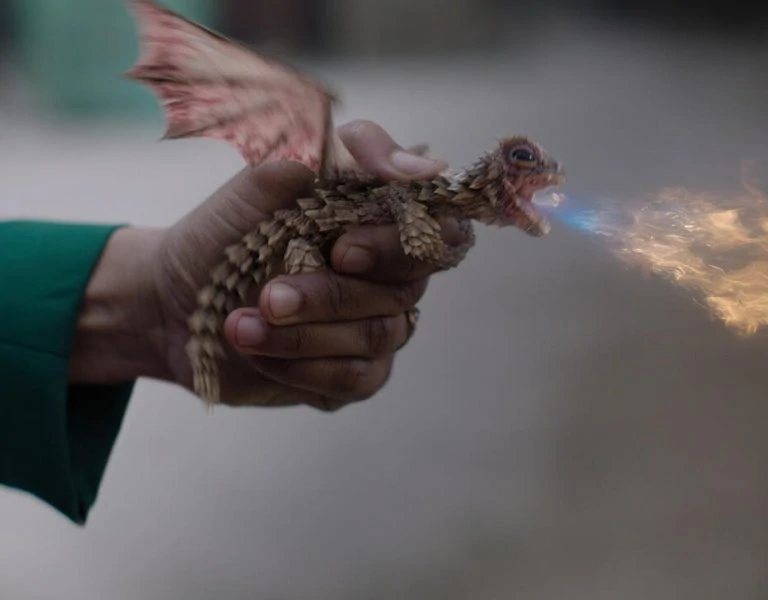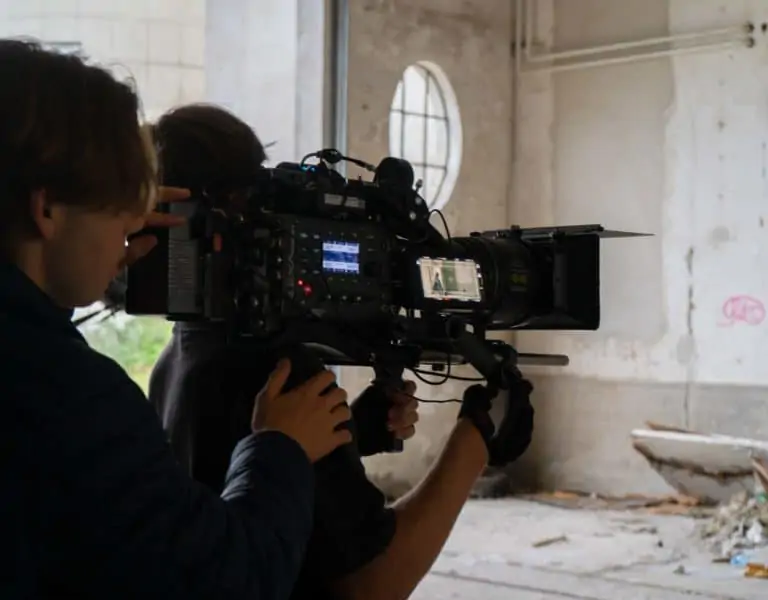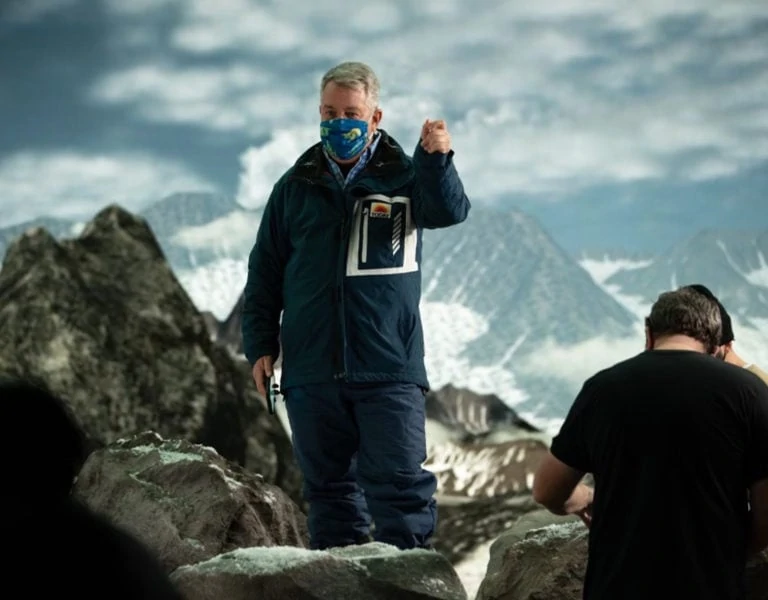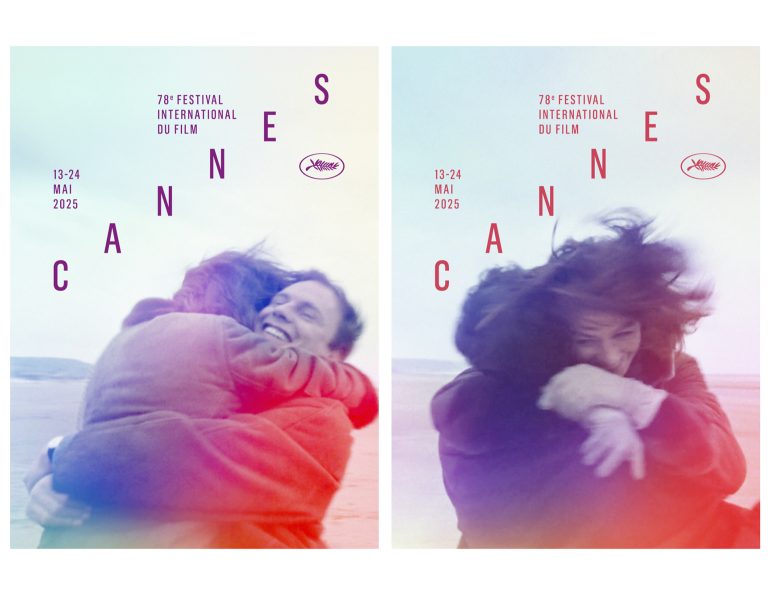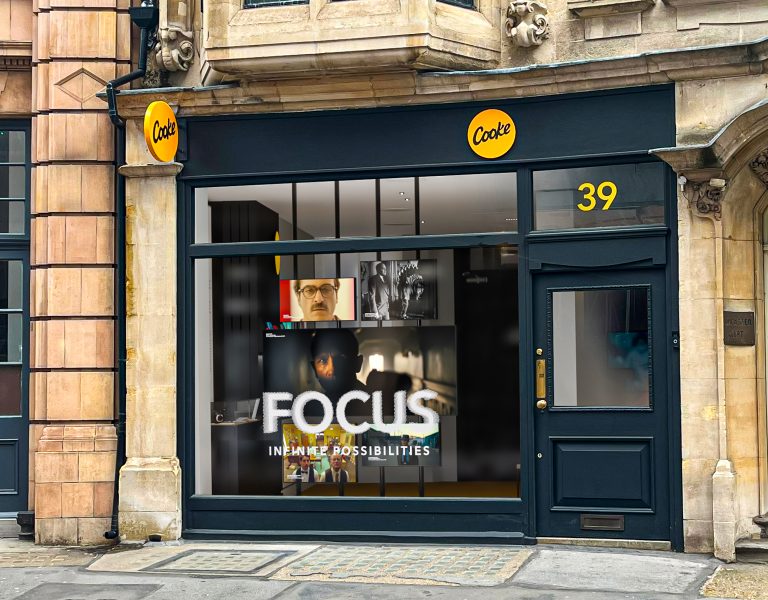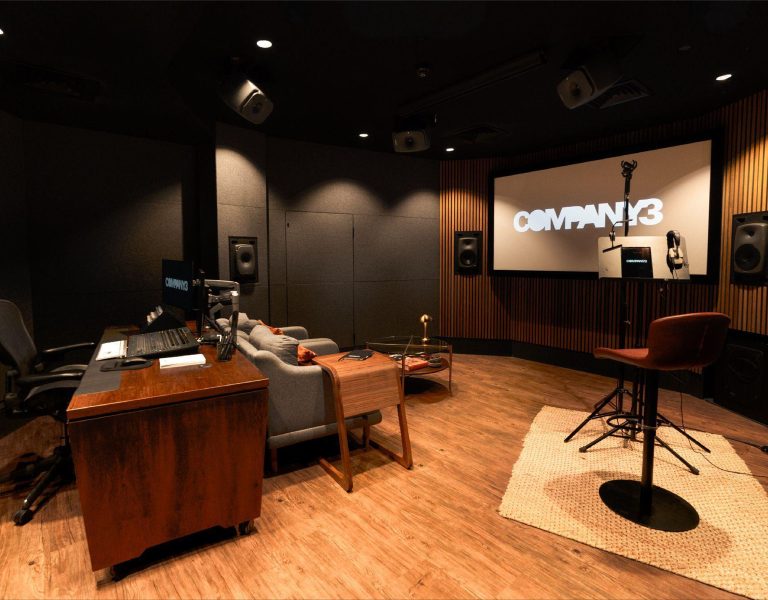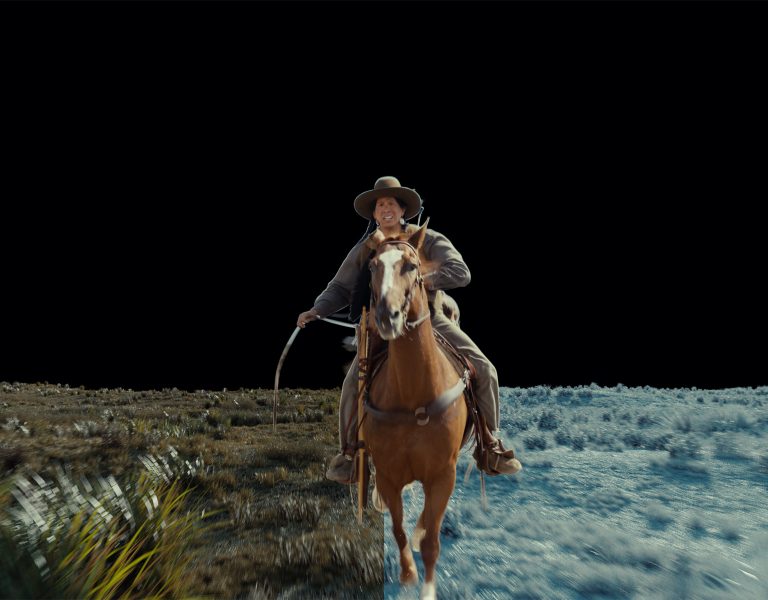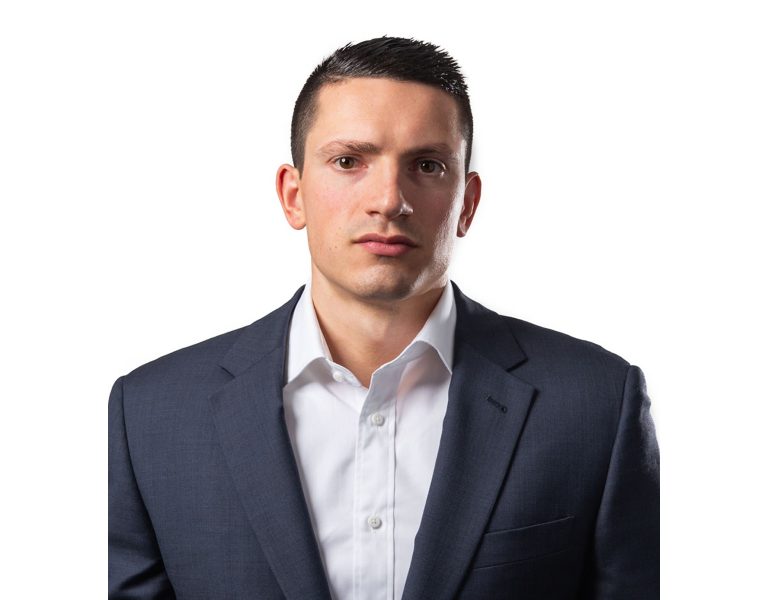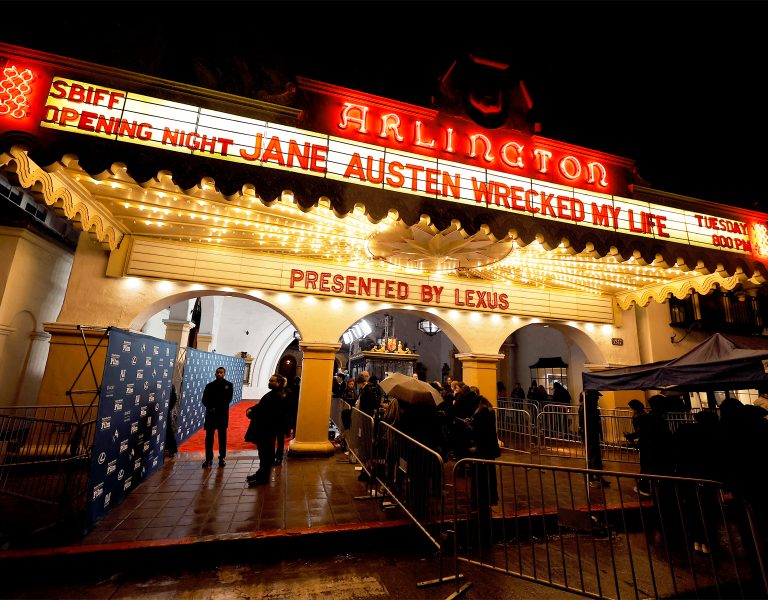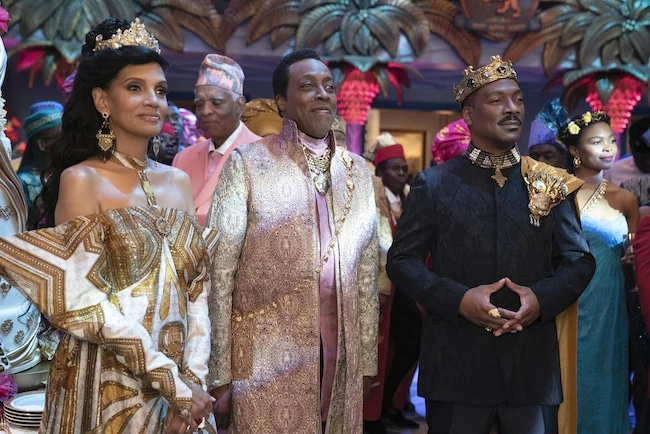
Cinematographer Joe “Jody” Williams and director Craig Brewer partner with Panavision and Light Iron to take audiences back to Zamunda in the sequel Coming 2 America.
Arriving in movie theatres in the summer of 1988, Coming to America starred Eddie Murphy as Prince Akeem Joffer from the fictional African nation of Zamunda. Upon learning that his parents, King Jaffe (James Earl Jones) and Queen Aoleon (Madge Sinclair), had arranged for him to be married, Akeem and his aide Semmi (Arsenio Hall) embarked on a journey to find the prince a bride with whom he could connect both emotionally and intellectually. Naturally, Akeem’s quest for the future queen of his nation took him to Queens, New York, and it was there that he met and fell in love with Lisa McDowell (Shari Headley).
Directed by Craig Brewer, the new sequel Coming 2 America finds Akeem and Lisa 30 years later and still happily married, now with three daughters of their own. But as Akeem takes his place as king of Zamunda, he finds himself torn between his country’s traditions and what’s right for his family — a situation that’s further complicated by the discovery that Akeem unknowingly fathered a son, Lavelle (Jermaine Fowler), who’s grown up and still lives in Queens. As trouble brews with Zamunda’s neighbor Nextdooria, Akeem and Semmi hatch an ill-advised plan to find Lavelle and press him into an arranged marriage that could bring peace to the region.

For the sequel, Brewer reteamed with cinematographer Joe “Jody” Williams following their work together on the series Empire. “I was honoured and ecstatic to get a chance to help shape this next chapter of the story,” Williams shares. “Like most people of my generation, especially Black people, I had a nostalgic connection to the first movie. It was one of the first times we saw ourselves projected in this way, as royalty. It had a profound and positive effect on us — and it was funny! It was Eddie and Arsenio, and they transcended any images we had ever seen of ourselves on the big screen. The way I remembered it in my heart was that it was the most beautiful thing I had seen with Black people projected in a positive light, both women and men.”
It was that feeling that the filmmakers wanted to recapture while simultaneously crafting a visual palette that would reflect Zamunda’s 30 years of progress. The filmmakers chose to frame the story in large format with Panavision’s Millennium DXL2 camera, which Brewer had previously employed on the Eddie Murphy-starring feature Dolemite Is My Name.
Coming 2 America would also reunite the director with Dolemite veteran Corinne Bogdanowicz, senior DI colourist at Light Iron Los Angeles. “What she’s brought across these two movies has been beautiful,” the director says. “And the facility is so amazing at Light Iron.”
“Corinne was awesome,” Williams agrees. “I hadn’t worked with her before, but I loved what she did on Dolemite, and there was a lot of brown skin in that movie. I felt totally comfortable with her as the colourist.”

Likewise, Brewer felt completely at ease with Williams behind the camera. “Jody’s technically brilliant, and he’s able to bring a richness to the imagery,” the director says. “There were very high standards on Empire. The show needed to look like a major movie, and he was able to deliver that in a very quick and efficient way — there were sometimes three music numbers on Empire per episode, and we only had eight days to shoot everything.
“Along with that, Jody’s just very cool,” Brewer adds. “Not much phases him. I don’t lose my temper, I keep my cool, and Jody’s the same way. When I saw the schedule and the kinds of sets and costumes we were going to have, I knew I needed Jody. We were already in that rhythm.”
Williams recalls being similarly impressed by Brewer when the director began working on Empire in the show’s second season. Their collaboration would continue through Season 5; over that time, Williams stepped up from A-camera operator to cinematographer. “Craig had a really good energy when he came to our show,” Williams says. “I gravitated towards his ease on set. He’s a great communicator, and he’s a good listener. And I could see his connectivity to the culture — not just pop culture, but African Americans. The actors responded to it, and I responded to it as an operator. We were just on the same wavelength.”

Coming 2 America’s 57 days of principal photography took place almost exclusively on stages and locations in Atlanta, where Williams and Brewer drew on their experiences from Empire to find convincing backdrops for Manhattan and Queens. “That’s all we did on Empire, shooting in Chicago and playing it for New York,” the cinematographer says. “Your vantage points have to be very limited — there’s no tilting up! But we found these nooks in downtown Atlanta where we were able to pull it off.”
For example, Williams notes, when Akeem first meets Lavelle outside of Madison Square Garden, aside from a wide establishing shot of the actual venue, the rest of the scene “is all practical Atlanta. Once we get into the dialogue, it’s all what we shot for real on location.”
The production sourced its camera and lens package through Panavision Atlanta, and Light Iron Atlanta provided dailies services. The filmmakers framed for the 2:1 aspect ratio, within which, Williams says, “I wanted as many head-to-toe shots as I could do. I wanted to keep the frames as big and expansive as possible so we could see the grandeur of the beautiful costumes and palace sets.”

Meanwhile, the question for costume designer Ruth E. Carter and production designer Jefferson Sage was whether they should recreate what was seen in the first film or instead evoke the wardrobe and architecture of the original while embracing materials that reflect the modern world. “That was the conversation every day,” Brewer recalls. “What we ultimately decided was that the movie means so much to everyone, and in particular to African American culture because it presented Black royalty on film in a way that had never really been seen before. But now the world has seen Wakanda, so we felt we had to bring the best-looking elements we could that are inspired by the first one. It feels familiar, but you’re in a better place now.”
For example, the 1988 version of the palace featured a pink and teal ballroom with palm trees painted on the walls. For the sequel’s ballroom, Sage referenced the original with palm-tree carvings, while Williams gave a nod to the old set’s colour palette through his colourful lighting for such scenes as the funeral of King Jaffe — which the monarch orders while still alive so he can witness the festivities. “I really gravitated to those colours, particularly in the spectrum from teal to purple,” the cinematographer notes. “Those are royal colours.”
Bogdanowicz describes the overall look throughout the rest of the palace as “warmer, with a little bit of creaminess. When it’s later in the day, we let it go a little bit further with a really rich, warm look, and other times it was a little more subtle.
“We had a lot of colour to play with in Zamunda, golds and blues and jewel tones, and we had a lot of fun being able to push things without going gaudy,” the colourist continues. “We wanted everything to play fairly naturally, with nice, warm skin tones and everyone looking great.”

Indeed, Williams remembers telling Bogdanowicz at the start of the DI, “The main thing is to highlight the beautiful brown skin tones, and to accentuate the colours without it becoming hyper-colourful or cartoonish. Those were the broad strokes.”
“Oversaturated colours can look artificial, and we didn’t want that to happen,” Bogdanowicz agrees. Accordingly, instead of directly boosting saturation, she focused on colour separation while “creating an overall curve that can give you rich colours. You can have a coolness in lower areas of the curve and a bit of warmth in other areas. By doing that, you get more colours on the screen, and that adds saturation to the image without actually pushing the saturation as a dial, which can so easily make certain colours go crazy.”
As with the first Coming to America, the sequel visually contrasts Zamunda with Queens. “After working with Jody on Empire,” Brewer says, “I knew the palace was going to look gorgeous and the dance numbers were going to be incredible. But I told Jody, ‘When we go to Queens, that’s when I’m going to start coming out to the DIT tent and asking you questions.’”
So it was that Brewer and Williams stood side-by-side at the monitor while preparing to shoot a scene inside a neon-tinged storefront church, home to Queens’ legendary Rev. Brown (Arsenio Hall in a prosthetic guise). The director looked at the image on the monitor, he recalls, “and I said to Jody, ‘I feel like I’m back in —’ and we both said at the time, ‘Hustle & Flow,’” referring to the director’s 2005 feature. Brewer continues, “It felt like it was through a sweaty Craig Brewer filter, and Jody said, ‘Yeah, that’s what I’m going for.’ That was a really great moment for me.”

Bogdanowicz describes the scenes in Queens as “more subdued and a little grittier, whereas we enhanced the natural beauty that was brought up in the more colourful sets in Zamunda. But we didn’t go crazy colourful or crazy desaturated in either direction. I started with a similar curve for each, which wasn’t far off from the dailies, and then for Queens we took out some of the warmer tones — so instead of having a lot of colour and more separation between the cools and the warms, we went slightly cooler and a little grittier.”
Throughout production, Williams consistently rolled at least two DXL2s simultaneously. “We had scenes with four or five comedians — not just actors, but funny people who were going to be riffing and ad-libbing,” he explains. “We wanted to be able to catch the magic. We probably had 25 to 30 days of three-camera stuff, and we had four on the musical performances.”

The cinematographer mostly worked with the DXL2 at its native 1600 ISO, though he occasionally set it instead for 800. “It looked great at both,” he says. “I loved all the latitude, and the 1600 was especially great when we did night-exterior scenes, like the scene in the garden where Lavelle and Mirembe [Nomzamo Mbatha] are walking. The blacks were great, and there was no grain.
“I’d love to shoot something arty with the camera where I could really play around with it,” Williams adds. “This camera’s got way more cool things that I want to explore.”

During preproduction, Williams shot lens tests at Panavision Chicago, cycling through a variety of large-format optics to potentially pair with the DXL2. “I just did portrait shots looking at the subject’s face and brown skin with lights turned on and off,” the cinematographer recalls. “I ended up going with Primo Artistes. All of the Panavision lenses are amazing; to me, they’ve always been the premier glass. But the Artistes spoke to me for this movie. I thought they had a more human, intimate sensibility. They have a bit of personality that’s not too in your face. The bokeh is really nice, the roll-off is great, and they have a softness, but it’s not too soft.”
Cinematographer Woody Omens, ASC had photographed the original Coming to America with Panavision’s then-new 35mm-format Primo spherical lenses, which Williams chose to employ for a flashback sequence that shines a new light on Akeem and Semmi’s first visit to Queens in 1988. To achieve the proper coverage with the 35mm-format Primos, Williams cropped the DXL2’s large-format Monstro sensor to capture a Super 35mm gate — which, thanks to the full sensor’s 8K resolution, still allows for 5K capture, a boon to the visual effects the flashback sequence required.
The flashback begins with actual footage from the original film, as Akeem and Semmi visit a nightclub in their quest to find the prince’s soul mate. Where the original scene ended with a spit take from Semmi, the flashback shows that gag and then continues, as though there was more to the scene than had made the final cut. “That’s one of those things you see as a director where the script says, ‘And then the greatest car chase happens,’” Brewer shares. “To see ‘And now Akeem and Semmi are back at the club’ — how do we do that?”
The solution involved dressing Murphy and Hall in reproductions of their 1988 wardrobe, building a partial nightclub set with lighting to match, and employing a range of visual effects guided by visual-effects supervisor Jon Farhat, including digitally de-aging the actors. “We even changed the background in the spit gag to incorporate the dancers we had in our club set,” Brewer reveals. “It was really all hands on deck to make that sequence work.”
“Lighting-wise, it was about connecting the dots and trying to get the colour scheme and the ratios in the same ballpark,” Williams explains. “We used the old movie as our reference, and we dialed the colours up and down by eye. We didn’t have to do a 180 around the room, so that made it much easier.” Because of the period setting, the cinematographer relied heavily on gelled tungsten units, although “we used LED for some of the colour in the background when they’re at the bar,” he adds.
In combining the new footage with the old, Bogdanowicz notes, “We had scans of the original film, and we wanted to keep everything fairly true to how the older footage looked. The challenge was really getting the newer footage to look more like the older footage.” To that end, she adds, “We put some grain on there to get more texture, and I ended up twisting the colour a little bit and actually taking away some of the range, squashing the highlights and giving it more of a gritty look.”
This was the only instance where grain was added to the movie. As Brewer notes, “We felt that Zamunda needed to have a magical, colourful pop that reads more smooth and clean.”

Back in the sequel’s present day, when Akeem and Semmi return to Queens, their first stop is the My-T-Sharp barbershop they had frequented 30 years earlier. Barbers Clarence (Murphy), Morris (Hall) and Sweets (Clint Smith) — along with their perennial visitor, Saul (Murphy again) — look as though they’ve neither moved nor aged in the past three decades. With their introduction, the sequel’s filmmakers managed what the original’s had needed to creatively avoid: showing all four characters in a single shot, which here unfolds with a camera move that reveals each in turn before landing on a wide shot of the group.
“That was all motion control,” Williams explains. “Jon Farhat really drove this sequence. He had worked with Eddie on The Klumps, so he knew how much time Eddie would have to spend in makeup and how much time we’d have to work with him on set. That sequence was fully storyboarded, and then the main challenge for me was, once the lights were set, I couldn’t do any tweaking. Eddie played one character each day, and he did Clarence two days. A-camera operator Billy O’Drobinak physically did the move, which was programmed so it could be repeated with each of the other characters.”
Character-makeup designer Michael Marino oversaw the prosthetics that allowed Murphy and Hall to play multiple characters apiece. While prosthetic makeup can require help in the DI to hide any seams, “that really wasn’t the case with this movie,” Bogdanowicz notes. “A lot of times with prosthetics, skin tone doesn’t quite match, and then you have to fix things in the DI. But the makeup was really good, and the visual-effects team was really strong. If there had been a problem, they’d already cleaned it up. We just tried not to let things get too contrasty so you wouldn’t see anything that looked artificial.”

Between Bogdanowicz and Williams, Brewer says he had no doubts about how the movie would be finished. “When Covid hit, I told Jody, ‘Just call me up on the last day [of the grade] and I’ll come in. I don’t have to be over your should on this.’ I felt that was the gift of having people I’d worked with before — and I was right!”
Because of the pandemic, Williams’ participation in the final grade began remotely, with the cinematographer at home in Chicago and viewing Bogdanowicz’s work in real time on an iPad Pro provided by Light Iron. He then traveled to Los Angeles to spend time inside Light Iron’s facility, where he and Bogdanowicz were safely distanced, each in their own grading suite. “This is my first big feature, so I wanted to see it on a big monitor,” Williams says.
He brought the iPad Pro with him to the facility and connected it to the remote stream, giving him a side-by-side comparison of the in-facility and remote experience. “I was shocked — the rendition on the iPad was off the chain. I’m watching her add vignetting and making subtle changes, and I could see these little micro adjustments on the iPad and the monitor. After that first day, I could have gone back home and done the rest of it from Chicago, but I stayed for a few more days and then did the last five days from home with the iPad. I totally trust doing it remotely with Light Iron.”
The grade began with the Rec 709 version, after which Bogdanowicz did a Dolby Vision HDR pass and a P3 trim for theatrical. “We had reviews almost every day with the visual-effects team,” Bogdanowicz notes. “We used Streambox, and they were watching on iPads, double checking that everything was okay colour-wise and there were no issues for any of the final effects coming through the pipeline. Sometimes they had a concern about how things would cut together, and I was able to pull up the scene so they could see it right away. Feeding them a livestream right out of the DI suite worked great.”

In making this sequel to a beloved 30-year-old comedy, the filmmakers’ creative journey very much paralleled Akeem’s arc in the film. Just as the newly crowned king must find the right balance between respecting Zamunda’s long-held traditions and being attentive the very real needs of his family and his people in the here and now, Brewer and his collaborators strove to honor the original film without being beholden to its every detail. “That’s what we were all going for,” the director says. “Every decision we were making was based off of, ‘Where are Akeem and Lisa now? Where’s their head, where’s their heart, where are they afraid, where are they disappointed in themselves?’
“The disruption Akeem and Lisa feel bursting their family bubble is really what the sequel is about,” Brewer adds. “All the themes of being a parent now and being in a different place 33 years later, it’s all what’s happening in the movie. We’ve got to move forward, but we’ve got to love the past.”

Unit photography by Quantrell D. Colbert and Annette Brown. All images courtesy of Amazon Studios and Paramount Pictures.
This article was posted with permission from Panavision.

